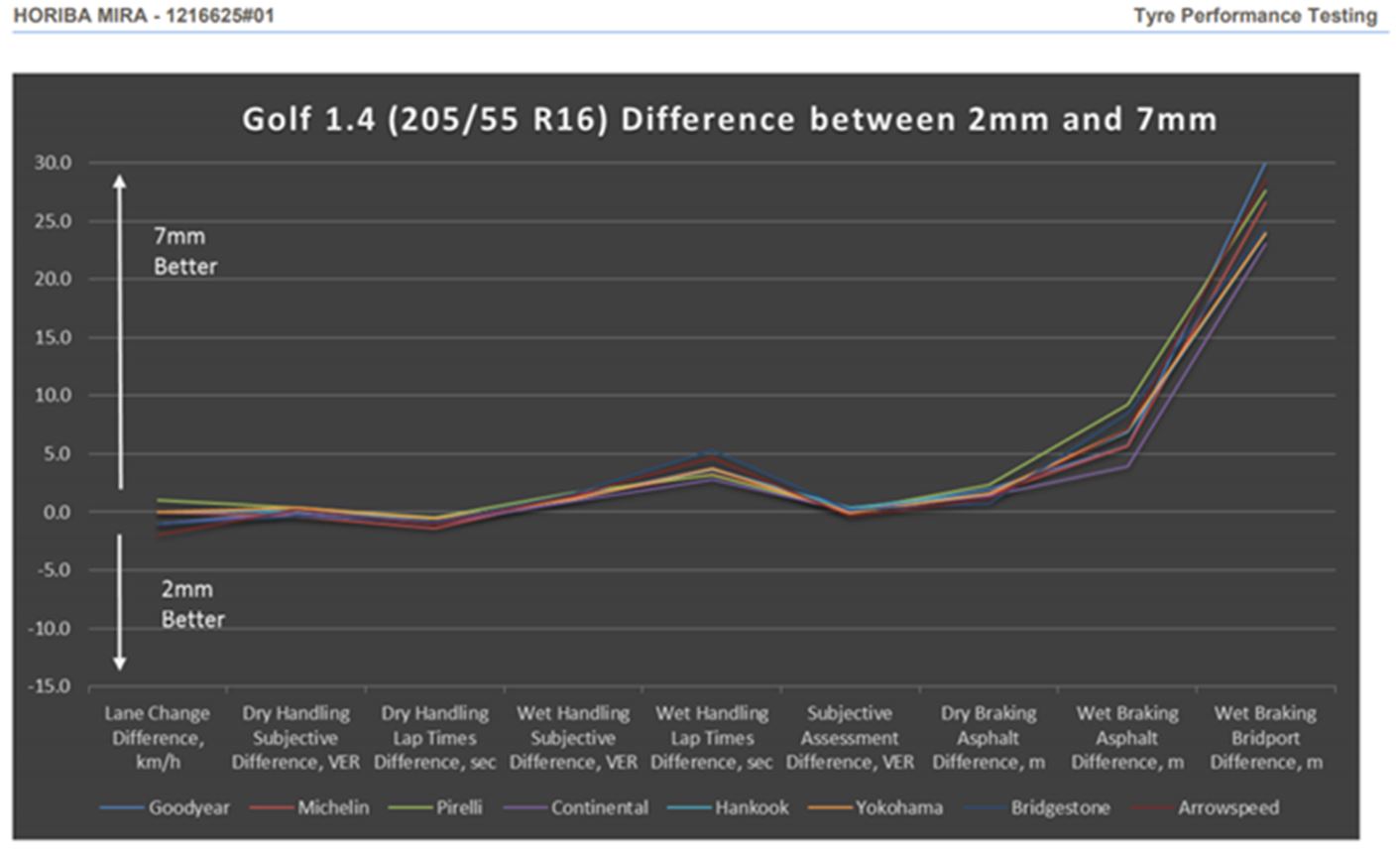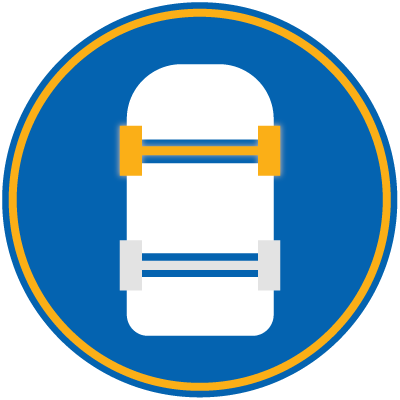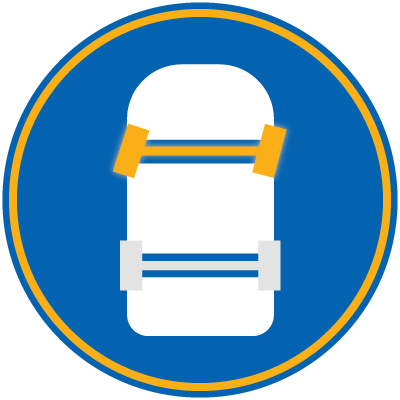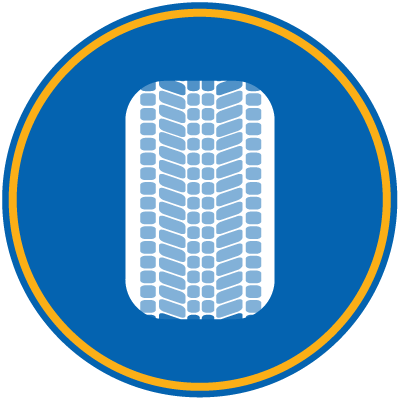Why you should replace tyres in axle pairs
Bradley Jando | Tuesday 1st December 2020 4:40pm

When you’ve got a flat tyre or slow puncture, you should replace it as soon as possible. Not only is this crucial for your safety, but also for the safety of everyone else on the road. Unsuitable tyres can lead to an MOT test failure. But you may have heard that tyres should be replaced in axle pairs. Is this true?
Put simply, yes, it is ideal and we recommend it.
Mixing tyres with different tread patterns or tread depths is not recommended by the majority of tyre manufacturers – but there are some exceptions where common sense is the best solution, such as when the other tyre on the same axle is practically new. We’ll go into more detail on that shortly.
What is an axle pair?
An axle pair is the pair of wheels that share the same axle. Cars almost always have two axles which spin with the wheels. Sometimes, the entire axle turns with the wheels in order to turn the car – but more often, the axle shaft remains perpendicular to the car while the wheels rotate from it.
Why does axel-pairs matter for tyre replacements?
Well, when one tyre has less pressure than the other in its axle pair, the pressure from the weight of the car is put onto the axle shaft and hub bearings unevenly.
This isn’t a problem for a short while, but over time this uneven force could wear different parts of the axle system down, to the point that they need replacing. This, you can imagine, is usually far more costly than replacing two tyres.
In the short term, uneven tyres can make road grip worse on the more worn side, and even contribute to faster wearing of the new tyre.
This, in turn, could make emergency braking dangerous - as your car could pull to one side sharply with sudden braking.
Having the same tread pattern matters
Your tyres are your only contact with the road. The tyre tread helps to channel surface water out and away from the tyres in wet conditions, so that your tyres can maintain contact with the surface. When the tread depth is too low, the water can’t be channelled away, which leads to what’s known as ‘aquaplaning’.
If the tread pattern on your tyres isn’t the same, then they channel water out in different ways – again leading to different pressures on the axle shaft, and reduced control in wet conditions.
When selecting tyres, be careful that they match the seasonal type of your current ones. Summer tyres, winter tyres, and all-season tyres all have tread patterns that are optimal for different seasonal conditions. Having two varying season tyres on the same axle pair can be dangerous in different conditions, as each wheel in the axle pair fights against the other.
View from the leading tyre manufacturers – Continental
Continental are synonymous with designing and manufacturing premium tyres with performance and safety at that core. Experts at Continental suggest that, while there are no legal regulations in the UK that state that tyre seasons should not be mixed, the practice is not recommended.
“Mixing tyres may result in unforeseen effects on the handling and comfort of the vehicle and therefore, if fitting All Season Tyres, then {Continental’s} recommendation is that where possible they are fitted in full sets in order to maintain optimum grip and safety. However it is also permissible to mix All Season Tyres with Summer or Winter tyres provided they are fitted in axle pairs.”
- Continental Technical Bulletin UK & Ireland #16
Having the same tyre manufacturer matters
Tyres in their different categories must all meet minimum safety requirements, but simply by the process of having different manufacturing methods, different brand tyres will have different lifespans.
Having differently-branded tyres means that you may get differences in tyre wear, and have to replace good ones sooner.
View from the leading tyre manufacturers – Pirelli
As one of the leading manufacturers of premium tyres who are also heavily involved in motor sport, Pirelli strongly advises that the same brand and tread pattern is fitted to both axles due to different ply steer angles being used in different tyre constructions.
“The ply steer angle is the angle created between the actual direction of travel and the ideal direction of travel of the driver. A larger ply steer angle on the front axle generates understeer and the vehicle tends to travel a curve with a larger radius. A larger ply steer angle on the rear axle generates oversteer (danger of spinning the vehicle). Whenever only two tyres are substituted it is recommended to fit the new tyres on the rear axle.”
- Pirelli Product Guide 2020
Should you change all 4 tyres on a 4x4?
With four-wheel drive vehicles, you may need to replace all four tyres when one gets worn out or has a puncture. This is because 4x4 systems rely on all four tyres when operating.
When not replacing all four tyres on your four-wheel drive car or van, be sure to check the maximum load rating on new tyres – it must match or exceed the rating given in your manufacturer’s guidebook.
Do I have to replace all tyres if the rest are new?
If you’ve recently replaced both tyres in an axle pair and you get unlucky with a puncture, then you very likely won’t need to replace both again. However, if it’s been a considerable length of time since you changed your tyres or had them checked then it’s important to seek the advice of a tyre technician. If you’re uncertain then please contact your local Kwik Fit technician who can measure the tyres and advise accordingly.
One of the most important considerations when replacing tyres, perhaps more so than ensuring your tyre treads match, is to try to avoid mixing tyres on a single axle with a varying degree of tread depth. Our own tyres tests conducted at MIRA in 2018 found that the difference in wet braking performance between nearly new tyres (7mm of tread) and nearly worn (2mm of tread) was as much as 30%. Kwik Fit performed tests with 8 tyre brands on a range of vehicle types (small car, family saloon, SUV, and Sports). Across the board, the wet braking capability of the tyres was between 15-30% better at 7mm compared to just 2mm of tread.

Sample of data from 2018 MIRA tyre tests – VW Golf 1.4 fitted with 205/55R16. Tyres with 7mm of tread performed better in practically every category but was most noticeable in wet conditions
Now imagine mixing two tyres, one with 7mm of tread and one with 2mm of tread on a single axle. As the nearly new tyre will perform much better, this could lead to differences in handling during wet braking that could result in the vehicle pulling to one side when cornering and stopping.
View from the leading tyre manufacturers – Michelin
Michelin is one of the world’s largest investors in tyre research and development to ensure that their tyre products are the safest and most efficient available to drivers. On the subject of mixing tyres, Michelin concludes that:
“It is recommended that tyres of comparable wear are fitted on the same axle. Michelin recommends that the new or least worn tyres are fitted to the rear axle for vehicle stability and safety. Ensure that the tyre inflation pressures are adjusted to comply with the vehicle manufacturer’s recommendations.”
- Michelin Professional Guide 2019
Why you should replace tyres in axle pairs
- Different tread depths on the same axle might generate a grip imbalance, causing your vehicle to swerve to one side rather than stopping in a straight line when you apply the brakes.
- Even amongst designs made by the same manufacturer, tyre structure might differ dramatically. When multiple brands and patterns are used on a single axle, it might cause under or over steering when cornering.
- All of the tyres on a vehicle should be the same seasonal kind, whether summer, winter, or all-season. The car may become unsteady if it has two different seasonal types of tyres.
When to replace tyres with different tread depths
If your tyres on a single axle have different tread depths and one needs to be replaced, you will need to make a judgement call as to whether you replace one or both tyres to ensure the tread depth of both sides remains fairly even. Our advice is that, if you have more than 3mm difference in the tread of your new tyre and the tread of your remaining tyre, it's best to replace both tyres to ensure braking and handling is optimised. If you are at all unsure, speak to the team at your local Kwik Fit centre.
Need your tyres replaced?
If you have any further questions, or you need to replace your tyres for your own safety and to pass your MOT, your local Kwik Fit garage will be glad to help!
Any facts, figures and prices shown in our blog articles are correct at time of publication.
Featured Articles
Is it Illegal to Drive With One Headlight?
Saturday 19th July 2025
Wondering if it’s illegal to drive with one headlight? Learn about the safety risks and penalties of illegal blown bulbs and why you should fix them promptly.
Air Con in EVs & Hybrids: Experts Answer Your Questions
Monday 30th June 2025
Does air con drain EV batteries? Can you use the air con while charging an electric car? Find out the answers to these questions & more from Kwik Fit’s experts.
Why Is Your Car Making a Noise? Fixes & Tips
Friday 13th June 2025
When your car starts making unexpected noises, it can certainly be quite disconcerting; it may be nothing to worry about, but here’s what you need to know.













